Bryan Pearson's Blog
August 17, 2019
Target, Kohl’s Are Adapting To Special Needs, And Already They’re Behind
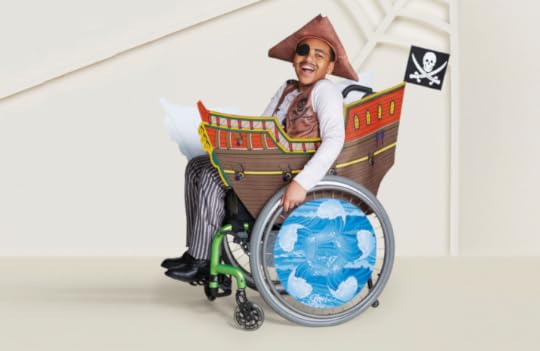 Image courtesy of Target
Image courtesy of TargetA princess in a wheel chair dreams just as big as a princess in a glass slipper. And if she has her way, she will soon reign in the land of retail.
Major retailers are beginning to learn as much, as evidenced in the new line of Halloween costumes introduced by Target (one of which consists of a princess outfit with royal carriage wheelchair cover). Kohl’s, which recently added inclusive clothing pieces to its three largest private-label kids’ brands, joins Target, whose Cat & Jack private label includes adaptive items for kids with unique needs.
By developing lines expressly for kids with special needs, these retailers are picking up on efforts by smaller, niche brands that recognize not only that this market is underserved, according to Core Research, but undervalued. Retailers that do not cater this need soon risk losing billions of dollars in future sales.
More Than 1 In 10
Nearly 16% of the world’s population, or about 785 million people, have a disability, Core reports, citing the World Health Organization’s 2011 World Report on Disability. It further states that 40 million Americans reported a disability in 2016.
Each one of these individuals has apparel needs like everyone else, meaning their clothing should serve both practical and expressive purposes. The key difference is traditional clothing lines don’t necessarily accommodate someone in a wheelchair, someone who has physical sensitivity issues or someone with condition-specific body measurements (as in the cases of those with Down syndrome).
Further, 40 million Americans doesn’t translate to only 40 million target customers — it’s much broader. This is because the parents of kids with unique needs may also be purchasing for their other children. Considering the challenges of traveling with a wheelchair alone, it’s logical these parents would prefer to spend their entire clothing budgets in one location, with those merchants that offer goods for all their kids.
It’s a lot of spending: Core Research estimates the market for adaptive clothing in the U.S. will reach nearly $52 billon in 2022, from $44.5 billion in 2018.
Globally, it estimates the market to reach $326 billion in 2022, from $278.2 billion in 2018.
Following In Zappos Footprints
Target and Kohl’s aren’t the first retailers to provide for these complex needs. Zappos Adaptive has been serving this market for at least two years, with shoes designed for diabetics, shirts with magnetic closures and wheelchair-friendly bottoms.
Other merchants that offer innovative clothing and other goods for the special needs market include:
Tommy Hilfiger: The American designer brand in 2016 introduced its “Tommy Adaptive” line for adults and kids as part of its commitment to inclusivity and, importantly, to make fashion accessible to all. It consists of easy-to-care-for clothing pieces thoughtfully made with one-handed zippers, back openings (for seated wearers) and wide leg openings, for prosthetics.
Lands’ End: This traditional brand it tailoring its best-selling items to look just like its mainstream items, but with subtle features for easy dressing, like rip-and-grip closures. The Universal Collection (the slogan is “Making Independence Routine”) includes school uniforms, dress shirts and casual clothes for kids, as well as professional and casualwear for adults.
Patti + Ricky: This online marketplace specializes in fashion and accessories, such as games and jewelry, for adults and kids. Among its creative categories are arm slings, braille clothing patches, decorative gear for crutches and “cochlear cuties” to dress up hearing devices. The brand plans to open its first pop-up shop in New York in 2019.
Ashley by Design: Many merchants that make and sell special needs clothing are entrepreneurs who have had the firsthand experience of trying to find such items. Ashley DeRamus is among them. She has Down syndrome and, frustrated by the lack of fashion options, started her own online women’s apparel brand. Her clothes are truly inclusive, because they can be worn by all women.
All Consumers Matter
These efforts tap into one of the basics of retail that still is occasionally overlooked: Every consumer behavior illustrates a need.
Clothing should be easy to wear; a hearing device or wheelchair can be accessorized to express individuality just like a backpack or bicycle could. The expansion into the special needs market reveals a breadth of opportunity for merchants smart and creative enough to recognize and explore the many differences that define us.
The sooner retailers and brands eliminate their blind spots to these differences and shine a spotlight of expression on them, the better their chances of being a trusted part of this market’s $326 billion (and growing) global future.
Make no question of it: Many of these special children will influence, even reign, that future.
This article originally appeared in Forbes . Follow me on Facebook and Twitter for more on retail, loyalty and the customer experience.
August 9, 2019
CVS CarePass Provides 24/7 Perks: A Glimpse Into What $5 A Month Can Get
 Image courtesy of CVS Pharmacy
Image courtesy of CVS PharmacyIn
rolling out its first paid membership loyalty program, CVS Pharmacy not only is
demonstrating confidence in its 20 years of rewards expertise, it’s recognizing
the nation’s readiness to pay for good health.
The program,
CarePass, is
the first membership initiative that offers free national pharmacy delivery and
around-the-clock healthcare access, expressly to make it easier for
members to care for themselves and their families. CVS began testing the
program, an extension of its ExtraCare service, in
Boston in October 2018.
In
addition to serving customers, CarePass serves to distinguish CVS’s loyalty
efforts from those of its direct competitors and, for that matter, the whole
retail industry. CVS competes with supermarkets, drug stores and even
department stores in certain categories, such as beauty. To better resonate
with shoppers, the $195 billion chain
is transforming itself into a holistic wellness brand. The new CarePass offers
a level of exclusivity to those customers equally serious about it.
And it
is a serious business. The wellness industry is approaching $4.2 trillion globally,
according to the Global Wellness Institute. Spending
in wellness beauty, personal care and nutrition alone generates $1.8 trillion.
“Building on two decades of success with
ExtraCare, we know how powerful it can be for our customers and our
business to design and leverage our loyalty program specifically with our
customers’ actual preferences and pain points in mind,” George Coleman, senior vice
president of merchandising at CVS Pharmacy, said in an email conversation.
How CarePass Works
CarePass
is designed to be flexible. Members can opt for the $5 monthly fee, for month-to-month membership, or pay a flat $48 for a year.
Benefits
include free one- to two-day online purchase delivery (on eligible items and
prescription drug orders), a 20% discount on certain CVS Health brand products
and access to a live pharmacist, around-the-clock, who has secure access to members’ prescription
histories with CVS Pharmacy.
As an
added thank you, members receive once-monthly $10 CarePass promo rewards, which
are automatically
added to their ExtraCare reward cards at the beginning of each monthly cycle
and expire at the end of the monthly cycle. (Note: Membership
is limited or unavailable in some states, and not valid at Target stores.)
Behind CarePass: A Q&A
Coleman took time to answer questions about
CarePass. Following are edited excerpts of our Q&A.
Q: Why did CVS introduce CarePass?
George
Coleman: We know people love our ExtraCare program, which
has more than 64 million active members, but we also recognize that some people
want both simplified value and access to our unique services and offerings. We
created CarePass with those customers in mind, making it easier for them to
save money while taking care of themselves and their families.
Q: What results of the test in particular contributed to the decision to
take the program nationwide?
GC: Our
pilot of this program exceeded our expectations across all metrics. We are
expanding this program ahead of schedule based on initial results from a few
select markets, which shows we are seeing increases in traffic and spending
levels for enrolled members that beat our projections.
For
example: Average CarePass members spend three to four times more than
our average CVS customers. As a retailer, we’re looking to drive growth and
attain new customers, and CarePass has appealed to a wide range of consumers,
with 30% of CarePass members being new or previously unengaged customers.
We’ve
also seen incredible engagement by members across all of our digital channels,
including pharmacy delivery, our app and CVS.com. Based on all of this data,
it’s clear our members have enthusiastically embraced the program.
Q: Did certain consumer groups react to the new program offering in notable
ways?
GC: We’re
excited to see that CarePass appealed to a broad audience, including
millennials, who make up 20% of our memberships.
Q: What changes did you make to CarePass during the test as a result of
feedback?
GC: We
rewarded our members with different surprise perks at key moments throughout
the year. For example, members have been able to receive free sports physicals
at their local MinuteClinics and free photos during the
holidays. We’re going to enhance and evolve the program after hearing even
more feedback from our customers following the nationwide roll-out.
Q: What’s next for the program?
GC: We’re
most excited about the potential for growth for this program across the enterprise.
We’re constantly working on the evolution
of our programs and considering new ways to deepen the
access to health care and health service that will make it
easier for our customers to take care of themselves and their families.
Healthy Choices
At $5
a month (or $48 a year), CVS believes it has identified its shoppers’ comfort
level when it comes to paying the price of priceless advantages, such as wellness.
It may have also discovered a virtuous cycle.
Those
memberships fees will help pay for the program, but ideally will support more
accurate communications and offers to its frequent members, for even healthier
rewards. Thus, it could lead to the promising pattern: the healthier the members
live, the better their rewards, the more engaged they become in CarePass, and
so on.
You can read my earlier coverage of the CVS CarePass pilot in Forbes.com here .
This article originally appeared in Forbes . Follow me on Facebook and Twitter for more on retail, loyalty and the customer experience.
Gen Z Is Ruling Back-To-School: 3 Lessons For Retailers
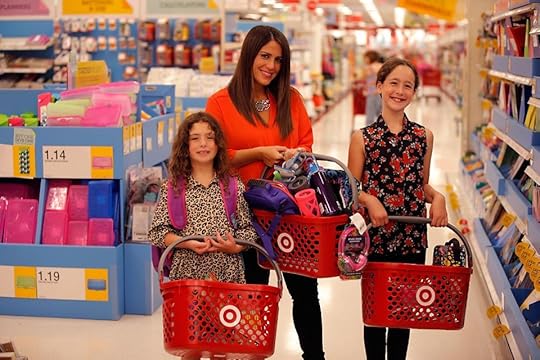 Getty Images for Target
Getty Images for TargetHere’s
a lesson retailers should brush up on before back-to-school sales start:
Preteen promotions 101.
Kids
are graduating to consumerism at a younger age, according to the National
Retail Federation’s annual back-to-school projections. In 2019, teens are expected to spend an average $36.71 of
their own money on back-to-school purchases, up from $30.88 10 years ago. Pre-teens
are projected to more than double their spending to $26.40, compared with
$11.94 a decade ago.
“Members of Generation Z are clearly becoming more
involved with back-to-school purchasing decisions rather than leaving the
choices up to mom and dad,” NRF President and
CEO Matthew Shay said in a press release. “Over the years, both teens
and pre-teens are spending more of their own money on back-to-school items.”
And they have a lot of spending power — an estimated $143
billion, according
to Bloomberg.
Here’s one big reason why members
of Gen Z (ages 7 to 22) are spending more of their own money on back-to-school
goods: They were born into digital commerce and are therefore conditioned to browse,
compare and price clothes and other goods on their own. The characteristics that
define their spending behavior, however, are influenced by social factors worth
investigating.
2+2 Equals Z
Many members of Gen Z are the offspring
of Gen X (born 1965 to 1980), a
group that grew up among
rising divorce rates, a waning economy and dual-income households. As a result,
Gen Xers adapted to caring for themselves at an early age, and they remain
resourceful, self-sufficient and independent.
These
qualities have been passed on to their kids. This is how that independence,
combined with technological influence, is shaping Gen Z’s shopping behavior.
Young shoppers are price conscious — 60% said they pick the brands
they buy based on price, according
to a recent report in Business Insider. This may be the result of their
experiences during the financial crisis of 2008, but also is likely influenced
by their innate tendency to compare prices online.Despite their affinity for browsing, Gen Z consumers are less
likely to plan their purchases in advance, meaning they may be more receptive
to offers designed to prompt impulse buying, according
to recent consumer panel data.This
impulse buying extends to occasional items such as clothing: 28% of Gen Z
shoppers spontaneously buy what they remember they need in whichever store they
happen to be, according
to research by WSL Strategic Retail. That’s a higher percentage than of any other age group.This “do it now” mentality
may explain why Gen Zers are less apt to invest time or money in longer-term
benefits. Fewer than half of Gen Z shoppers are likely to make purchase
decisions motivated by reward programs, compared with 73% of millennials,
reports Lab42
Research.
Gen Z Schooling: 3 Lessons
These behaviors will likely evolve
as Gen Z shoppers mature, so retailers that recognize these predilections now
will be in better position to keep pace. Following are three guidelines, based
on how Gen Z is already shopping.
Understand
what value means to them. For Gen Z, value seems to be defined
more by price than by time or ease. This is likely a result of their
cash-conscious upbringing as well their more abundant free time (generally, no
kids or professions). Members of Gen Z are, for example, more likely than
millennials to
visit a physical Walmart store — 93.8% vs. 91.6%. Yet despite their digital
nativity, they are less likely to visit Walmart.com: 19.9% vs. 23.9%. The
website is just not connecting with these shoppers.Be prepared for their impulses. Because Gen Z shoppers are more likely to buy
what they need at the moment they think of it, retailers should be prepared
with pop-up promotions that reach them while in the store. This could be
achieved through loyalty programs that text or email practical offers and
rewards in real time. My Starbucks Rewards is a favored program among a majority
of Gen Z members, according
to loyalty services provider CrowdTwist, likely because they can redeem points
easily, on the app, at low thresholds. Gen Z shoppers might engage further if
Starbucks begins selling school-themed cups or marketing an after-school menu. Offer
online-only specials. Because teens are intuitive
online browsers, it’s not surprising that half
say Amazon is their favorite website, according to a
spring survey by Piper Jaffray. So
if retailers combine the first
two lessons of cost consciousness and unplanned buying with this affinity for
digital browsing and price comparing, they may experience a sum that is greater
than the parts. Online-only offers, ideally of a limited time, will likely entice
students to purchase rather than price compare.
Retail has entered an age where age no longer matters. Technology and self-reliance are accelerating the spending maturity of kids, possibly faster than retailers could keep up. Next time a retailer encounters a group of eighth-graders in its store or on its website, it may want to treat them like seniors — maybe even college seniors.
This article originally appeared in Forbes . Follow me on Facebook and Twitter for more on retail, loyalty and the customer experience.
August 2, 2019
Robots Are Taking The Store At Kroger, Walmart And Whole Foods. What Could Go Wrong?
Robots don’t need food, but they do need a recipe for success. This is especially the case when they’re added to the supermarket aisle.
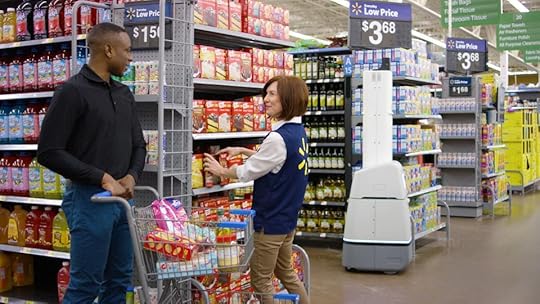 Photo courtesy of Walmart
Photo courtesy of WalmartThe grocery industry is stepping up its investment in shopper-facing
robot technology ambitiously, and evidently with much confidence, as it strives
to offset the costs of online delivery and pressure from non-supermarket
competition. Retailers overall are investing an estimated $3.6 billion in
artificial technology globally, and are expected to invest $12 billion by 2023,
according to Juniper
Research.
And while a lot of this spending is dedicated toward
warehouse and fulfillment tasks, supermarkets are increasingly earmarking some
of their robot investments for in-store services.
Kroger, in addition to building 20
robot-automated warehouses in the U.S., is testing driverless robot
delivery cars.
Walmart has adapted robots to scan
and sort inventory and identify shelf items that are out of stock. And at 172
Giant Food Stores in the MidAtlantic region, as well as 100 Stop & Shop
stores in New England, a pillar-shaped robot named Marty scopes the aisles for
hazards such as spills and runs price checks.
The evident goal, in addition to cutting costs, is to improve
the in-store and online shopper experience. Robot artificial intelligence can
use algorithms to recall shopper preferences, quickly cross-reference
shelf-prices and they can work around the clock.
What could go wrong? A few things, experience has shown.
Uh-Oh: 3 Robot Fails
Let’s preface these robot fails with the fact that people
tend to hold robots to pretty high standards. A study at the University of
Wisconsin concluded that students were more willing to tolerate the poor
scheduling predictions of humans than of robots. As one
report described it: “It is almost as if people ‘forgave’ the human advisor for
making a mistake but did not extend the same feelings of forgiveness to the
computer.”
Let’s
remember, robots are only human-made. Still:
They creep out shoppers. In Scotland, shoppers were so turned off by a robot named Fabio they wouldn’t even take free meat from it. First the question-answering robot frustrated and spooked shoppers in the aisles (background noises prevented It from understanding queries). So grocery chain Margiotta stuck Fabio in a corner to give away free samples of shredded meat, and shoppers avoided that aisle all together. The experiment was, well, scotched. Indeed, 95% of consumers said they don’t want to talk to a robot or chatbot while shopping in-store or online, according to a by Oracle NetSuite. They don’t always save (the right) face. A New York teenager sued Apple this spring after it incorrectly identified him as a shoplifter. The actual thief had stolen the teen’s driver permit, which did not include a photo, and used it as identification in the stores. The suit claims Apple’s facial recognition system linked the face of the camera-tracked shoplifter, who hit several stores in multiple states, with that of the teen. The boy was arrested, but after detectives reviewed the surveillance footage, they realized they had the wrong guy. They could take your job. The cost savings realized through robots come, in part, through job efficiency (read: more work; fewer hours). However, the jobs won’t fully disappear, said Ben Wald, cofounder of Very, an Internet of things software development and design firm. “In the AI-dominated world, employees who were once drivers, stockers or cashiers can be retrained to operate and maintain the devices and programs needed for food production, delivery and sales,” he said in an email. The unanswered question is whether they will be better-paying jobs.
Bot Around The Clock: 3 Benefits
If robots do save money, it will ideally be used to
improve supermarket experience and operations. Here are ways how:
They can get the price right. Robots can use their high-paced monitoring
capabilities to scan and gauge price tags and check accuracy. Stop & Shop’s
googly-eye
robot, Marty, for
example, could recognize if a price tag has
fallen from a display of cereal. It will then snap a photo of the product,
forward it to an employee at the company TaskUs, which operates the system from
hundreds of miles away, to confirm the problem. Marty then alerts customers and
store employees.They’ll show you the way. Product location is a big issue for big box
stores, such as Lowe’s. A lot of shoppers, fearful of getting sucked into a
search vortex, will go to a smaller store or give up on items on their list.
Lowe’s is testing an in-store robot, LoweBot, to help
shoppers locate items
in the store and to perform other robot tasks, such as track inventory in real
time. In 2018, Lowe’s added a text-based customer service platform to
anticipate customer needs.They will do the grunt work, without
complaint. Robots not
only can work around the clock; their AI technology could automate the
least-appealing parts of work, such as cleaning. Walmart is deploying
autonomous floor scrubbers at 1,500 locations. As it described
in a statement to National Public Radio in April: “The tasks being automated are generally things
that we struggle to find, hire and retain associates to do. As we’ve started
changing the job to take out some of that routine work, it’s becoming easier to
find people to do those jobs.”
And robots don’t need lunch breaks. However, while robots don’t eat food, they do feed on data to perform accurately. In return they could serve the shopper more effective, enjoyable and seamless experiences. The recipe for that success is in determining the right, experience-enhancing reasons to release the robots at the start.
This article originally appeared in Forbes . Follow me on Facebook and Twitter for more on retail, loyalty and the customer experience.
July 24, 2019
Advice For Etsy Shoppers: 8 Distinct Products You Could Buy With Free Shipping
Here’s one
thing Etsy can offer shoppers that Amazon might not: A sweater for your box
turtle that will make it look like a stegosaurus. And at $35, the shipping is
free.
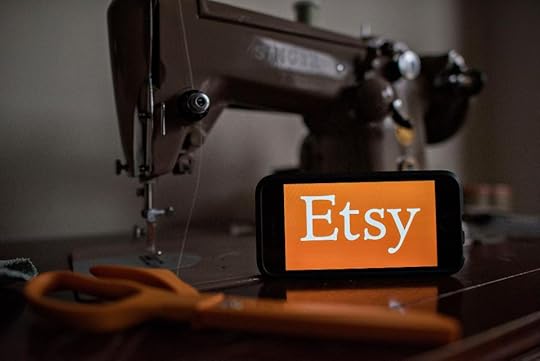 Photo: Bloomberg
Photo: BloombergThe little
green reptile sweater is among many unusual artisanal finds customers can discover
on the online marketplace, and the kind that make it such an original shopping
destination. But paid shipping is increasingly a deal breaker for shoppers. So 14
years after Etsy was founded as a sanctuary for independent-artists and vintage
goods, it is making corporate-like decisions to maintain viability.
Most
recently: It is encouraging its merchants to offer free shipping on
orders of at least $35. In return, these artisan merchants will receive higher
rankings on Etsy’s search results.
For shoppers,
this new model may mean free shipping on exclusivity, because many of Etsy’s
products are unique to its marketplace. Following are eight categories of
products that shoppers may be able to get with free shipping (meaning they are
at least $35), should the vendors offer it. All distinguish Etsy from its
competitors, and reveal why it should matter to shoppers.
Homemade
candy and candy cakes: Yep, they are just what they sound like:
Tiered cakes constructed entirely of Snickers bars, Mike & Ikes, Tootsie
Pops, Twix Minis and other wrapped sweets. Several are themed (Father’s Day,
Harry Potter/Muggle cake and peanut-lover’s dream). For those who want fresh candy
processed in the home kitchen, many makers of artisanal sweets sell on Etsy,
from made-to-order truffles to chocolate tools that look authentically rusty.Faux
wedding cakes. They’re a thing, and increasingly popular among couples who prefer to have a fake cake
melt in the sun or succumb to mishaps. They also are a less-expensive option
for couples who want a wedding cake only for a centerpiece and photo shoot.
Made of Styrofoam and sometimes covered in real icing, faux wedding cakes can include
a slice of actual cake for the cutting ceremony. The price difference is
substantial: A faux cake can cost $100, while the average real wedding
cake is closer to $400. (One
Etsy merchant sells elaborately decorated faux doughnuts and popsicles for weddings).Handmade
children’s clothing. Speaking of photo shoots, parents often
hunt for one-of-a-kind outfits for baby’s first (fifth, 11th)
portrait. Similarly, grandparents, godparents and friends tend to want to be
remembered for gifts that make a statement. For this, Etsy has several options,
including bell-bottom toddler pants, handknit hooded baby ponchos and
traditional African and Indian clothing. (Many items, including baby pinafore
dresses, sell for far less than $35.)Taxidermy
oddities. A shopper in need could find a rabbit’s foot or stuffed
duckling across many websites, but Etsy stands apart for its breadth of
taxidermy creativity. The artisans of this craft flock to Etsy with offerings
that come in the forms of Jackalopes, hamsters with human faces, winged hares
and mounted swans. The choice of animals in the midst of human activities alone
could fill an unusual Christmas list.Vintage
designer wear. Shoppers who want to really stand apart at
an event have a better chance of accomplishing so much on Etsy. Its “vintage couture” selection goes back decades, ranging
from a 1950s Jean Patou jacket to a Valentino “new” haute couture polka-dot
dress ($8,280). Its selection also covers a variety of tastes, price points and
brands, including 1990s Versace and a 1960s Adolfo knit dress from Saks ($60).Genuine
Eames furniture. Charles and Ray Eames were a powerhouse
designing duo who helped define mid-century modern furniture, notably with their
chairs. Etsy carries a range of them, including the iconic leather lounger and
ottoman. ($7,000). New Eames pieces are still in production today — Herman
Miller and Vitra International are the only producers — but the Etsy items come
straight from the period, which could make a big difference to enthusiasts.
Etsy also offers a broad selection of mid-century modern furnishings from other
designers.First-run
psychedelic concert posters. Grateful
Dead, Jefferson Airplane, The Doors and Janis Joplin concerts are as well
remembered for their promotional psychedelic posters as for their bootleg live
recordings. Enthusiasts can discover original posters by Wes Wilson, Rick
Griffin and other pioneers of psychedelic rock art on many sites, but Etsy has
a deep collection that spans artists and musicians, some of which are
one-of-a-kinds. Long
lost board games. Out-of-circulation board games aren’t just
for collectors, they can make for highly personalized gifts and party activities
(just keep the dip and drinks away from the board). Etsy’s selection covers
those mass produced by Parker Bros., J. Pressman and others. Among the
offerings: Pollyanna (early 1900s); Whippet Race (1920), the Wide World Travel
Game (1950s) and Waddingtons Monopoly (made in the UK, 1930s). And for those
interested in teenage sleuths, there’s a rare Nancy Drew Mystery Game.
Other retailers are likely watching Etsy’s free-shipping effort to see
how it works out, and they will hopefully fold these consumer insights into
their own customer-service cost structures. Though, as any customer would be
happy to tell them: When it comes to delivering shopper value, free shipping is
just one part of the experience.
Regardless of the outcome, shoppers are the winners, because one more barrier to affording increasingly hard-to-find treasures is being removed.
This article originally appeared in Forbes . Follow me on Facebook and Twitter for more on retail, loyalty and the customer experience.
July 23, 2019
4 Tips For Appealing To Tweens Boys: What Target And Others May Be Overlooking
Call them the hot new “in” b’tweens: Boys ages 8 to 12, often overlooked by retailers, yet developing enough spending muscle to build a cottage industry.
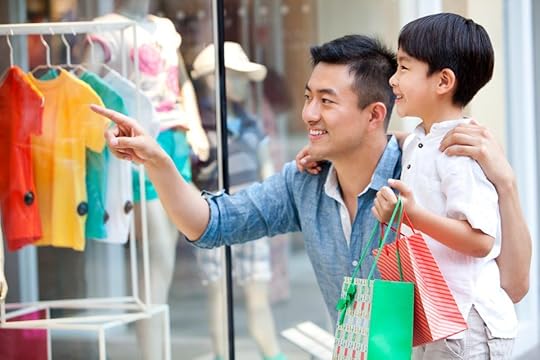 GETTY
GETTYTween boys have long been overshadowed by their female counterparts, but their purchase influence could very soon escalate — thanks in part to the effect tween girls have on their behaviors. And tween girls wield a lot of power in retail: Target in July introduced an exclusive line designed for girls aged 8 to 12, called “More Than Magic.” Its nearly 500 items are the direct result of interviews with girls and their parents.
Which raises the question: Where’s the boys’ voice in the tween market? There are as many boys in this age group as girls (boys represent half the population, based on government figures), yet few retail brands seem to invest in this market in big ways.
It isn’t entirely for lack of trying. Some efforts have been abandoned after underperforming (Justice’s Brother Brand, for example) and certain categories, namely video gaming, are quite good at reaching their target audiences. Some brands, such as Target’s Cat & Jack kids’ line and Amazon’s “A For Awesome” and “Kid Nation,” cater to both tween boys and girls.
Is there a missed opportunity in not talking directly to tween boys right now, given the escalation of image-based social media platforms, as well as the broad acceptance of individual expression? Well, kids grow up fast — faster every year, thanks to the changes that technology displays to them daily.
13 Million Question Marks
One reason so few retailers and brands offer lines expressly for tween boys may be that there is little research into the demographic’s size and spending capacity.
There are nearly 13 million tween boys in the United States, based on population figures by ChildStats.gov, which lists 24.5 million children ages 6 to 11 in the United States, of which 51% are boys. (Figures are broken down in age groups 6 to 11 then 12 to 17, of which there are 25 million.)
These boys represent a lot of unanswered potential for retailers and brands — if they can connect. Many boys in this age range are still trying to figure out who they are, what they like and who they want to be.
What is clear is their identities are shaped by the heavy influence of social media, gaming and other digital communities — all of which leave data tracks we will soon explore. Retailers and brands may not find a lot of public research on tween boys as a market, but they do have their own insights gathered through loyalty programs and other sources.
4 Steps To Tween Coolness
Retailers must understand their customers to communicate with them, after all. When it comes to tween boys, however, the customer isn’t always the end user. Here are four considerations in determining what will hit the mark.
1. Use loyalty insights. Through their loyalty programs, retailers could identify and assess when tween-boy purchases begin — larger clothing sizes and sharply higher grocery bills, for example. This purchase information can trigger and inform communications and promotions for other products that will appeal to this demographic. Hint: keep it fun. Shoppers with kids are more likely to want a fun shopping experience, and that begins with offers sent directly to their smart phones, according to retail analytics firm Precima.
2. Partner with moms. Tween boys may influence purchases, but their moms make the final call. Retailers that show they understand the peer pressure boys feel — about how they look, smell and compete — have a better chance of capturing moms’ ears. If brands can further prove themselves as trustworthy and authoritative on tween boy issues (such as through research), they can gain generational loyalty. A good example is the brand Janie & Jack, which specializes in a laid-back preppy look that says “I’m so in control” (for the boys) and “He’s going to be so successful” (for the moms).
3. Reach them through girls. Moms make the purchase decisions, but they have competition in terms of influence by one of the most persuasive market groups — tween girls. More than 40% of boys ages 8 to 18 said one of their best friends was a girl, according to NPD Research (cited in The New York Times). These girls — who mature faster — are guiding boys in fashion and fads, often through social media. Sporting brands like Nike and Under Armour have been effective at tapping into this susceptible age period by taking the market seriously and offering boys the same styles as men.
4. Don’t assume their interests. Generally, tween boys are losing interest in toys, gaining interest in girls, and definitely interested in being cool. Enter products such as SpongeBob SquarePants Eau de Toilette Spray for Boys. The trick is remembering that thinking like boys also means seeing what they see. Technology makes a lot of new interests accessible, such as photography (Instagram and Snapchat), entrepreneurialism (apps like Street Food Tycoon), and a range of activities addressed in video games – Lego hit the mark with its Dimensions series.
Lastly, retailers and brands would benefit from being sensitive to the vulnerabilities of tween-aged boys. This period between childhood and teens is filled with expectations that earlier generations did not experience. If these boys feel cared for, above all else, they will likely remember it as men.
This article originally appeared in Forbes . Follow me on Facebook and Twitter for more on retail, loyalty and the customer experience.
July 14, 2019
Will Amazon’s Prime Day Ruin Christmas? 5 Unexpected Ways It’s Already Changed Retail
What do you give a company that has everything? Amazon, the world’s largest retailer with nearly 200 million unique monthly visits, wants more of your spending — now. Why wait for a holiday?
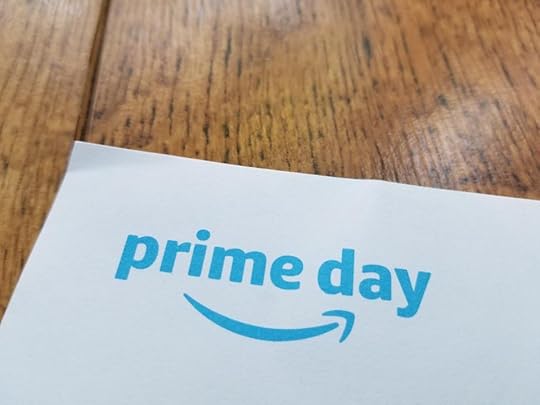 (Photo by Smith Collection/Gado/Getty Images)GETTY
(Photo by Smith Collection/Gado/Getty Images)GETTYPrime Day, when the world’s largest retailer offers Prime subscribers thousands of items at reduced prices, is the gift that keeps on giving for shoppers: Many major chains, from Target to Walmart, have counteredwith their own “Black Friday in July” sales. EBay has launched a “Summer Brand Outlet” microsite that includes “Hot Deals for Hot Days” through July 22, and a “Crash Sale” on July 15.
And customers are happy to celebrate early. While 70% plan to shop Amazon on Prime Day(s), July 15 and July 16, 44% plan to shop Walmart, and 40%, Target according to Bazaarvoice.
In fact, gift-giving is now a year-round occurrence no longer anchored in major holidays such as Christmas. Amazon Prime Day might not be the only retail event responsible, but its 2015 launch was a likely catalyst. Tens of millions of people became Prime members during the 2018 sale, Amazon has reported, during which it sold more than 100 million items.
Some Bloomberg facts:
Amazon in 2018 generated nearly $235 billion in sales, accounting for 7.7% of all U.S. retail sales.Amazon commands 45% of all e-commerce sales, which were $524 billion in 2018 (eBay trails in second at 6.8%)Since introducing its Prime membership program in 2005, Amazon has registered more than 100 million paying members.In 2018, industry-wide July retail sales outpaced December retail sales — $447 billion and $443 billion. Prime Day is in July.
Amazon’s 5 Surprising Changes To Retail
All these numbers add up: Amazon, and Prime Day, have changed retail in unexpected ways beyond mid-summer shopping binges. Here are five such ways.
1. It’s flattening the spending calendar. Thanks to two-day free shipping and a widespread availability of once hard-to-find products, we simply do not wait for what we want anymore. If a Prime member feels like lobster tail, champagne and ice cream for dinner, he or she only has to wait three hours for Whole Foods to make the (free) delivery. Of those who plan to shop Prime Day, 49% expect to get a jumpstart on holiday purchases, while 28% of those with children will buy back-to-school items, according to research by Valassis, a consumer marketing firm. Annual retail spending has steadily advanced to $6 trillion in 2018 from $2.85 trillion in 1998, before the internet boom, according to U.S. Census figures.
2. It made rental apparel, and everything, vogue. Amazon has made pretty much all other digital retail viable, enabling the development of online-only merchants (such as Warby Parker) and swap-or-rent sites including Rent the Runway. True, a glut of online retail surfaced in the late 1990s (Amazon was founded in 1995), but most failed. Others that succeeded include eBay, also launched in 1995, and Zappos (1999), which Amazon acquired in 2009 — the same year Rent the Runway emerged. Amazon’s influence is evidenced in this fact: One year after Amazon patented its one-click service, in 1999, Walmart launched its shopper website.
3. It buried a category killer, and brewed an industry. While Amazon’s prices and convenience slowly choked the life out physical book stores, coffee shops where customers could read off their laptops emerged from the ashes. Credit coffee retailers that spotted an opportunity in transforming their shops from pit stops to lounge areas. The U.S. coffee house market rose an estimated 41% from 2011 to 2017, to $23.4 billion, according to Mintel research. Starbucks locations alone blossomed to nearly 30,000 in 2018 from 1,000 in 1996.
4. It’s replacing cashiers with robot tech. If Amazon pursues its previously reported plan to open 3,000 cashier-free Amazon Go stores, we can count on other retailers to follow suit in some form. Combine this with self-checkout and the retail cashier will be less of an in-store standard. Retailers will need technicians, however, to maintain and fix the many computers and cameras required to follow, fulfill, track and ring up shoppers and their purchases. Research by Quartz found that in 2017, bookstores, grocery stores and clothing stores counted 170,000 fewer retail jobs. Meanwhile, Quartz estimated that Amazon added 75,000 robots to its workforce in 2017.
5. It made the in-store retail experience much better. Shoppers would never have been treated to vending machine-like shoe dispensers (DSW) or inventory-free stores (Nordstrom) if retailers were not forced to make their physical experiences more irresistible than online convenience. These efforts appear to be clicking among young shoppers: Gen Z consumers visit an average of 5.25 stores per week, new research shows. That compares with four stores among millennials and three across the general population.
These five changes may not all be considered a gift to retailers, particularly those that cannot match the competition. However, change will come one way or another, and Amazon’s influence undoubtedly is presenting opportunities for shoppers that will influence retail incrementally, today and every day beyond Prime Day.
This article originally appeared in
Forbes
. Follow me on
Facebook
and
Twitter
for more on retail, loyalty and the customer experience.
July 5, 2019
Working The Rainbow — 5 Retailers That LGBTQ Employees Support
We see a lot rainbows in June. But what about July through May?
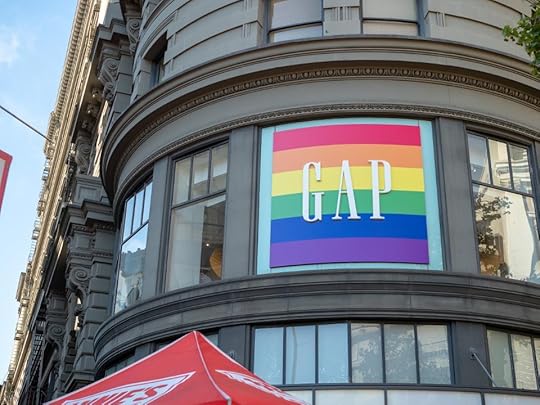 Image: Getty
Image: GettyAn
avalanche of corporations come out to support the LGBTQ community during Pride
Month — typically through the sale of color-splashed products — but during the
rest of the year, those rainbows tend to fade and with them, seemingly, so does
the support.
Yet
those 11 months, July through May, are when the public should measure how well organizations,
including retailers, stand behind equal human rights and inclusivity. In few ways
is this measure as effective as in the workplace: A recent Glassdoor
survey conducted by The Harris Poll reveals that 53% of LGBTQ employees (lesbian, gay, bisexual,
transgender and queer/questioning) have experienced or
witnessed anti-LGBTQ comments by co-workers.
So instead of lauding
the brands that support Pride in June, how about recognizing those the LGBTQ
community supports all the time, through their hard work? Here’s a list of five
retail brands that champion LBGTQ rights year-round and are embraced by the
community, based on Glassdoor rankings.
1: Ikea Group
The
Swedish home furnishings merchant Ikea has formally embedded diversity into its
values and expects its staff to practice inclusive behaviors in collaborative
ways. To this end, offers
training
on LGBT+ inclusion to enlighten workers of their possible unconscious
biases regarding sexual orientation and gender identity, and how to reduce
these biases.
Among its benefits for
LGBT+ workers and families: Ikea’s U.S. medical plan covers a portion of gender
confirmation counseling and surgery.
As one employee
from Ohio describes Ikea: “I receive great benefits; as well as the equal
opportunities to pass those benefits along to my wife to help start and grow
our family. I am so proud Ikea honors our #uniqueness and celebrates our
individuality globally.”
The
$32-billion
beverage and snack foods brand operates an LGBTQA
Business Resource Group (lesbian, gay, bisexual, transgender,
queer/questioning and asexual), in operation for almost 15 years, and was among
the first companies to support new U.N. standards for LGBTI (lesbian, gay,
bisexual, transgender and intersex) rights. It also offers benefits packages
that serve as safety nets for LBGTQ employees, as Glassdoor reports:
“In
2011, the company began offering and in 2015 it began assisting with the costs
of taxes imposed on eligible U.S. employees whose same-sex spouse or partner
was enrolled in health benefits and who lived in states that did not recognize
same-sex marriage.”
Separately,
Coca-Cola in January was included in the 2019
Bloomberg Gender-Equality Index for its initiatives involving gender
equality in the workplace.
3: Gap Inc.
The
fashion brand Gap in 2014 was the
first Fortune 500 company to confirm that it pays men and women equally for
the same work, and it extends that equality across the spectrum. Gap has organized
a group within the company called GEAR — Gay Employees, Allies and Resources
— dedicated to creating an inclusive and supportive environment for its
LGBTQ employees.
In terms of employee
benefits, GAP provides an adoption assistance reimbursement plan (important
to same-sex couples) as well as a pet discount program to offset the cost of
veterinarian care, per services and supplies. In 2018, employees of its Old Navy brand voted it among the 100 Best
Places Workplaces for Diversity: “They walk the talk when it comes to community
involvement, equality and equal rights.”
4: Apple
When a company’s CEO is gay, you can expect it
opens its arms to all members of the LGBTQ community, and Apple has done so since
long before appointing Tim Cook. More than half of Apple’s employees (53%) are from historically
underrepresented groups in technology. And for decades, its Diversity
Network Associations have presented places for workers to connect with
confidence. More than 25,000 Apple employees participate in one of the associations,
which include Pride@Apple, Accessibility@Apple, Amigos@Apple, Black@Apple and
Women@Apple.
“Being a leader at Apple means you’re held
accountable for creating an environment where people feel included and
welcomed,” Apple employee Consuela, a mixed-race woman who is part of the LBGQT+
community, states on Apple’s website.
“It’s not just a recommendation. It’s expected of you.”
5: Target
Target distinguishes
itself among shoppers for its exclusive, limited-time designer labels, but
among workers it is known
for inclusion. More than 10,000 of its staff members participate in its
six diversity business councils. The groups — LGBTQ+ African American, Asian American, military and women — provide
onboarding, networking and professional development opportunities.
In 2015, Target published a Pride
manifesto to showcase its consistent commitment to creating an inclusive
culture. In 2016, Target further supported its commitment by publicly reinforcing
its policy
on restroom and fitting room use, which states employees and customers are
free to use the rooms that correspond with their gender identities.
These efforts matter every day of the year to
employees, as well as to shoppers. And they should matter to all retail brands.
When seeking Pride support, people are learning that the best measure of
authenticity is in seeing a brand’s true colors in July, and afterward.
This article originally appeared in Forbes . Follow me on Facebook and Twitter for more on retail, loyalty and the customer experience.
July 1, 2019
Walmart, Lowe’s And Others Are Getting Real About Training: How Immersive Tech Works
It’s travelled from the cockpit to the store aisle, but we never have to look beyond our nose to get what will likely transform our shopping experiences for possibly decades to come.
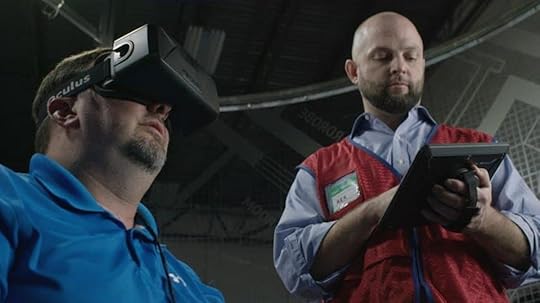 PHOTO COURTESY OF LOWES
PHOTO COURTESY OF LOWESImmersive learning, enabled through virtual reality software and headsets, is becoming a mainstay of major retailers, for a variety of scenarios. Originally seen as a method of safely and affordably placing workers in critical situations — think hospital operating rooms or robberies — more brands, from Walmart to Lowe’s, are finding virtual reality as a proven method for teaching old-fashioned customer service.
According to research by Capterra, nearly 33% of small and midsize U.S. businesses are expected use virtual reality in employee training by 2021, with projections it will get employees up to full productivity 50% faster than traditional instruction. Because the technology replaces actual in-store equipment and is getting pretty affordable — estimates are a virtual reality-ready laptop can run for $1,000 — the return on investment is justifiable.
By comparison, in early 2018, 32% of retail employees said they didn’t receive any formal instruction.
The Virtuals Are Coming!
In the past year, however, more retailers have implemented specialized employee exercises to improve their brand images and address sensitive customer-service issues, such as race and diversity.
Sephora in June closed all of its stores for one hour to perform “inclusivity workshops” for its associates following accusations of racial profiling. Starbucks similarly captured headlines in May when it closed 8,000 stores for an afternoon of racial-sensitivity training, after two African-American men were arrested at one of its stores while waiting for a friend.
But some merchants are extending their learning programs for a competitive edge. Ace Hardware in 2018 launched a program that combines hands-on education with e-learning to improve not just employee knowledge, but confidence.
Virtual reality and immersive training (referred to as immersive learning in the VR industry) are the logical next step for retail training, even for day-to-day encounters, as the technology becomes more available. A number of virtual reality tech companies, including Strivr, Regatta, Tailspin and Knowledge Anywhere, offer a range of instruction to improve customer experience soft skills as well as solve critical challenges, like sexual harassment.
Immersing Workers In Mobs And Window Dressing
Those retailers that have been using immersive training say it has improved worker engagement while reducing job-preparation times, translating to well-invested dollars. Among the examples:
Walmart works with the firm Strivr to prepare workers for a variety of typical-to-unusual scenarios, including recognizing when the produce aisle is under-stocked, managing Black Friday mobs and responding to severe weather. Importantly, the scenarios also are designed to improve customer engagement — helping cashiers develop interpersonal skills and empathy with customers, for instance. Walmart has deployed the platform across 200 Walmart Academies and in September 2018 sent 17,000 Oculus Go headsets, used in the process, to all its stores in order to train 1 million associates.Verizon, recognizing that its stock of hot smartphone technology can make its 1,600 stores targets for theft, uses virtual reality to simulate robbery activities in actual stores. Frontline employees experience three to four scenarios, such as smash-and-grabs or thieves barging in with guns pointed, yelling instructions. In each scenario, the workers must respond in real time. Verizon stores are robbed fewer than 50 times a year, but the company said just one event makes the investment worth it. Workers have described the training as raw and emotional.Lowe’s has been using virtual reality to help its employees learn how to understand DIY projects better, right down to window fashions. The home-improvement chain has customized it “Holoroom How To” augmented reality platform, created for its customers, to carry employees through each step of a project, including how to use in-store equipment. The “Holoroom How To: Red Vest,” system instructs employees how to better serve customers and they learn from their mistakes without wasting materials. More than 90% of Lowe’s employees said the system helps them better serve shoppers, the company said. Chipotle uses virtual reality to guide its workers on how to prepare its menu items and clean the prep area — a critically important task in food service.Honeygrow, a Philadelphia fast-casual chain, uses immersive training during employee on-boarding to help new hires better adapt to the company culture.
Retailers evidently recognize that immersive learning takes the risk out of potential harmful situations, but more importantly, they’re showing that they take soft skills such as eye contact and listening seriously; this is great news for shoppers. Virtual reality workplace simulation may have proven itself in high-pressure situations such as sports, cockpits and operating rooms, but it’s low-risk effectiveness is no less important for managing everyday customer encounters.
Will virtual reality make a difference for the retail experience? It should, and in time everyday shoppers should notice.
This article originally appeared in Forbes . Follow me on Facebook and Twitter for more on retail, loyalty and the customer experience.
June 27, 2019
Best Buy Is Flexing Its Merchandising Muscle With Fitness Equipment; How Far Can It Run?
Best Buy is muscling into the $13 billion fitness industry, but is it training for a marathon or a sprint?
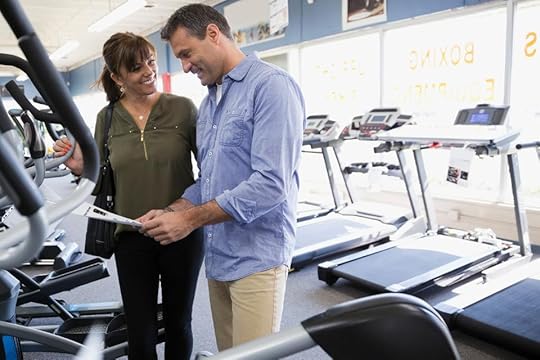 Photo: Getty
Photo: GettyThe electronics retailer plans to open
dedicated fitness spaces in more than 100 stores by the end of 2019. The
workout equipment, which includes tech-enabled and connected spin bikes, rowing
machines, treadmills and workout recovery systems, are available online now and
will arrive in stores in the coming months.
It’s not Best Buy’s first foray outside of
home entertainment systems and appliances, or even into healthy living. The
workout commitment is in fact just one leg in a longer race for the healthy
consumer’s expanding wallet share.
In August 2018, Best Buy acquired GreatCall,
a health-services platform that provides emergency response services for senior
citizens. In April, it
started selling Tyto Care’s home medical exam kits online and in some
stores. And in June, it acquired
senior remote monitoring company Critical Signal Technologies.
At-home
fitness is a logical next-step for Best Buy, as it extends from senior care to
younger consumers and family. And it could prove lucrative: The global fitness equipment market is expected
to exceed $13 billion by 2024.
Sprinting Through Inventory
Best Buy describes its fitness mission as deeper than sales; it’s
an effort to support the healthcare industry. As Jason Bonfig, Best Buy’s chief merchandising officer, said
in a statement: “We’ve promised our customers we’ll help enrich their
lives, including their health and wellness, by using technology. This is a
great example of how we’re living up to that commitment.”
But a retailer needs sales to make
any endeavor work. Whether rowing machines are, or will become, hotter than
home entertainment systems is a risk Best Buy has evidently calculated. Here
are a few reasons why the move makes sense:
More people are working out.
Americans have increased their participation in almost all physical activities from
2013 to 2019, according to the 2019 Physical
Activity Council Participation Report. Two-thirds (66%) of Americans participate
in fitness sports, compared with 60% in 2013. Broken down by generation, 55.6%
of Gen Z participate in casual or active high-calorie activities; compared with
nearly 64% of millennials and 71% of Gen Z. Across all generations, more than
half get their activity from fitness sports.Obesity rates are starting to
decline. They are among children, anyway, and the young are Best Buy’s
next consumer base. Obesity rates among preschoolers of government aid declined
to 14% in 2016 from 16% in 2010, according
to a 2019 report by the Centers for Disease Control and Prevention. The
positive impressions Best Buy makes now in terms of wellness could last.Wellness is a trillion-dollar
industry, and growing. As a likely result of these
trends, the wellness industry is expanding in direct correlation to thinning
waistlines. Overall global wellness spending was valued at
$4.2 trillion in 2017, the most recent year for the figure, representing
nearly 13% growth over $3.7 trillion in 2015. Of that, the fitness and
mind-body sector of the industry generated more than $595 billion, a near 5%
increase from 2015 ($542 billon).Fitness now connects us. The expansion of the home
fitness market is driven in part by sales of tech-connected gym equipment, such
as the Flywheel spin bikes Home Depot will carry. They come with monitors
through which users can stream workout classes. The sale of connected gym
equipment alone is projected
to grow at an annual compounded rate of 31.1% from 2017 to 2023, to more
than $1 billion.
Best Buff: Finding Legs In Service?
So when Best
Buy states in its annual report that growing its health business
is a priority for fiscal 2020, it makes sense that we see it also expanding its house-calling advisors program and tech support.
But
there are two key distinctions between selling these
services and treadmills: Home exercise
equipment is expensive, and it doesn’t necessarily
encourage repeat visits.
There is one
opportunity, however: Best Buy is connecting its fitness
investment to its in-home advisor services, to help its
customers “discover, understand and purchase the equipment.” Best
Buy’s in-home experts will learn to use the workout gear as well
as how to install it in homes, so these house calls could extend to
equipment service visits and,
possibly, training.
Could the Best Buy Geek Squad transform into the Best Buy Fit Squad? Maybe there’s room for both, if Best Buy is diligent about monitoring its pace. Retail is a marathon.
This article
originally appeared in
Forbes
.
Follow me on
Facebook
and
Twitter
for more on retail, loyalty and the customer
experience.
Bryan Pearson's Blog
- Bryan Pearson's profile
- 4 followers



